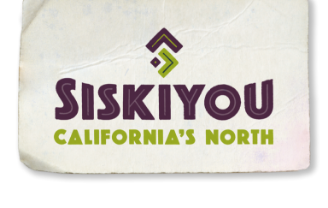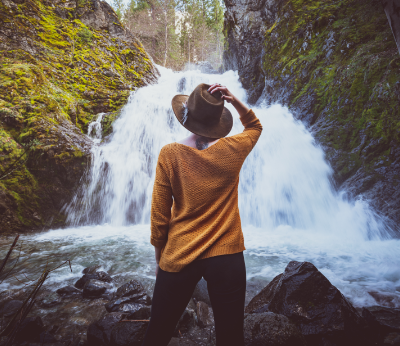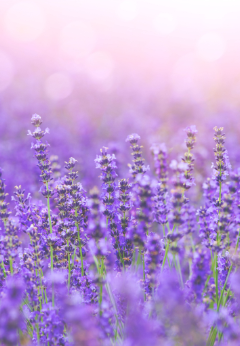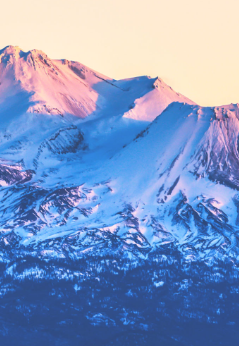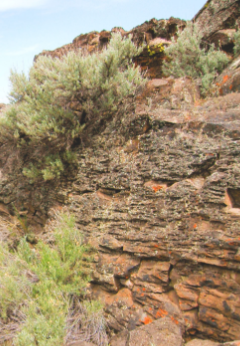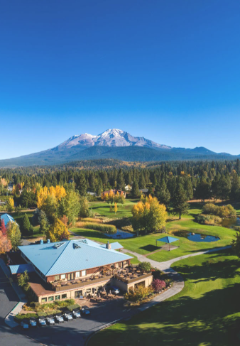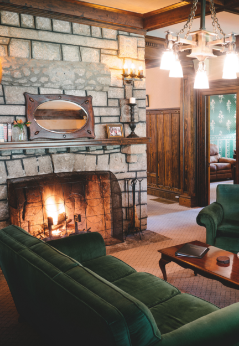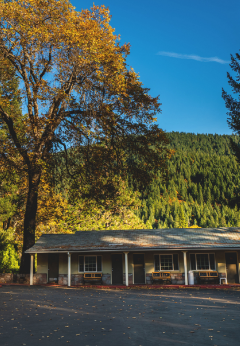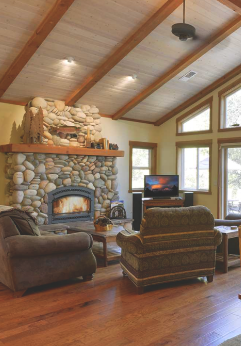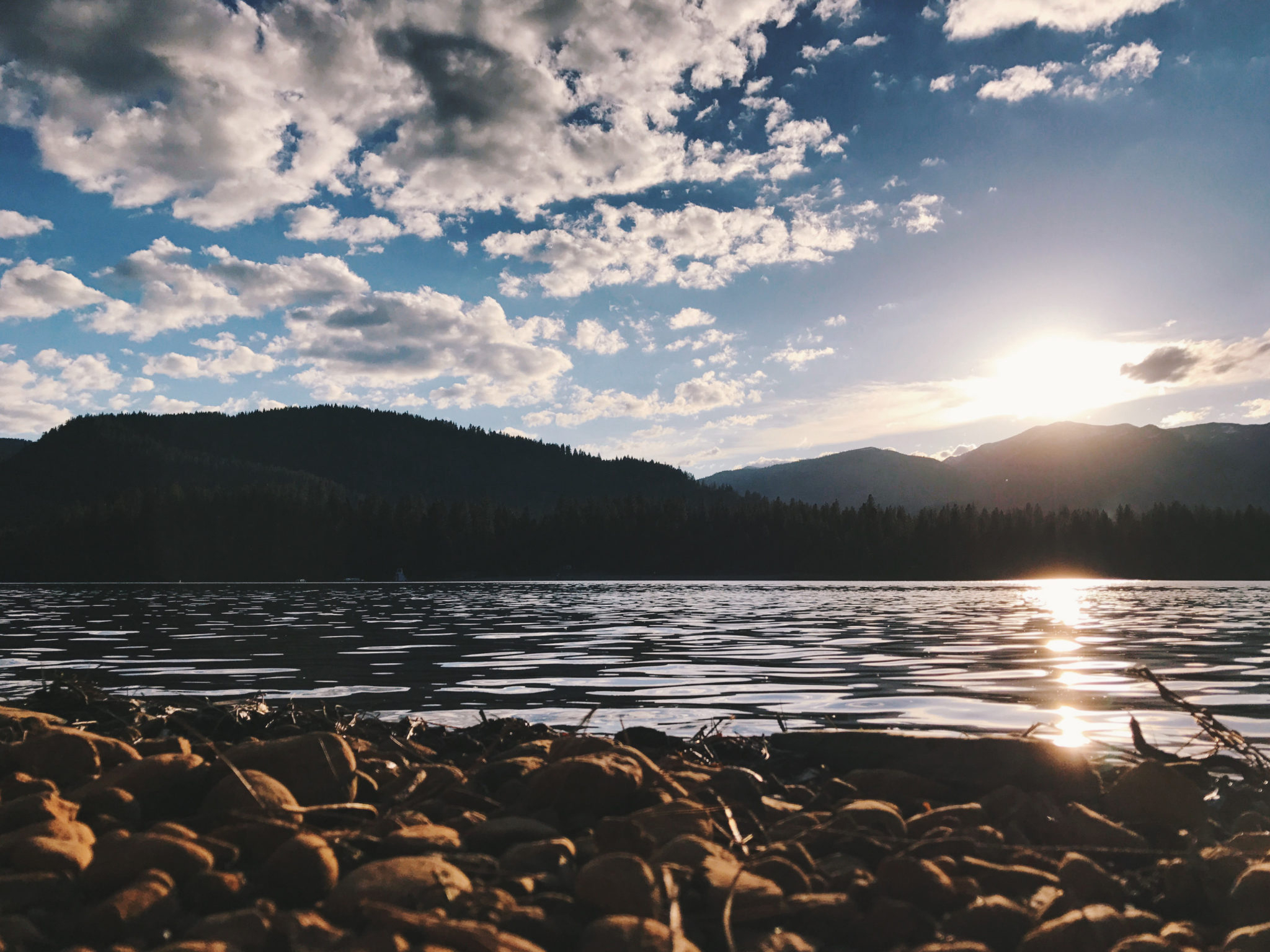Episode 05 - Siskiyou’s Dark Skies
On this episode of the Discover Siskiyou Podcast, we explore Siskiyou’s majestic nighttime skies.

Episode Transcript – Siskiyou’s Dark Skies:
(00:04):
There’s no shortage of amazing things to do and see in Siskiyou. In fact, it’s usually a pretty difficult task to pare down the list of activities we choose to feature in these episodes. But one gem that I feel often eludes even the most experienced traveler is stargazing. Not just a quick glance, but true stargazing taking the time to really observe the night sky. These glimpses into the infinite void. These moments of unintended time-travel truly let us know where we stand in the universe.
(00:37):
Most widely recognized nighttime view is that of our Milky Way’s galactic center, the glowing dense, massive stars crossed by wispy ethereal arms. Most of us are probably only familiar with this view from our Instagram feeds, but each summer in Siskiyou, all you have to do is look up. Seeing millions of stars feels special, but it feels even more special when you realize that 99% of people in the U S and Europe can’t experience a natural nighttime sky. This was according to a 2016 study called the World Atlas of Artificial Night Sky Brightness. Today’s city lights, residential fixtures, and even car headlights all contribute to light pollution. The form of light pollution that affects most of our nighttime views is “sky glow” or the brightening of the sky over built areas. It’s that nighttime orang-y haze just above the horizon that city dwellers and suburbanites are familiar with. In the aforementioned study, with a link in the show notes, found that 80% of the world’s population is affected.
(01:37):
My nieces and nephews came up here and, you know, we had that little moment in between where the sun’s setting and the stars haven’t fully come out yet. And they’re like, Oh, it’s so dark here. It’s so dark. Turn on the lights! Just wait, because as soon as the stars like really come out and the moon, we’re not going to need the porch light. And just seeing their awe of that, they were just blown away when we finally turned everything off and let the fire die down and they got to look up and they were just amazed. They hadn’t ever seen that many stars before.
(02:07):
That’s Angela Sutton lead interpretive ranger at Lava Beds National Monument in Tulelake, one of the parts of Siskiyou County that’s so dark, so free from sky glow and other light pollution that it is currently being considered by the International Dark Sky Association as a “Dark Sky Place.”
So broadly speaking, there’s two categories or kind of philosophies behind our Dark Sky Places. We have our conservation certifications, which would be international Dark Sky Parks, International Dark Sky Reserves and International Dark Sky Sanctuaries. And these are protected lands where there’s extremely good sky quality and these places also take effort to enact policies which protect their future skies for generations to come. But then also..
That’s Adam Dalton, the Dark Sky Places Program Manager at the International Dark Association.
(03:01):
While that job title does not sound real, I assure you, it is undoubtedly real. Um, my job at IDA essentially is to run and manage the organization’s flagship conservation program, which is our International Dark Sky Places program.
(03:16):
The Lava Beds National Monument is a vast park located in the northeastern corner of Siskiyou County. And it’s about to join just a handful of National Parks that have received the honor of being designated as a Dark Sky Place. Pat Seiser, a physical scientist in cave resources lead at the park has been working with the Dark Sky Association to get a Dark Sky Place designation.
(03:38):
And the idea is that as we’ve become more and more urbanized across the world, um, we’re losing the ability to see our stars. There was a decision made that we needed to recognize and protect our night skies.
(03:52):
Some of the steps they’ve been taking at the Lava Beds National Monument have been to swap fixtures in bulbs for more downward-facing warmer lighting. The park staff and visitors have already noticed an improvement and to paraphrase Adam, unlike other forms of pollution we’re most familiar with, restoring the night sky happens literally at the speed of light. What’s more, the benefits of these changes extend far beyond an improved view for astronomers.
(04:18):
The International Dark Sky Association was founded in 1988, as a joint venture between a professional and an amateur astronomer, Dave Crawford and Tim Hunter, both of Tucson, Arizona, which is where our organization is currently headquartered. And it was originally focused more on astronomy, but as our organization has grown and evolved, it’s also began to focus on other things such as ecology, human health, certification of lighting, educational programming, and it’s become much more multi-faceted over time.
(04:52):
Light pollution affects quite a lot of things, and these days, it’s difficult to find parts of the world untouched by this little-known pollutant. Luckily, there are parts of the world where you can still see the sky for all it has to offer. And Siskiyou is one of those places.
(05:07):
It is really hard. Um, realistically speaking, if you’re looking to go somewhere that completely lacks the built environment, you’re going to go to some of the most remote sites. If you’re speaking about like the continental US. Now, if you’re in Alaska, it might be a little bit easier. But if you’re talking about most of the continental US, it’s very hard. And if you’re talking about some of the more densely populated States, it’s nearly impossible. I mean the most recent estimates place that 80% of people cannot see the Milky Way from where they live. And I would doubt that that’s currently the case, that study that was released that was a little bit, it was released a few years ago. So I guess that probably upwards of 80% of people in North America could not see the Milky Way from where they live. If you look at light pollution’s progression over the past, really 60, 70 years, you can see a remarkable trend where there’s vast reserves of darkness throughout the US and great clear starry skies.
(06:05):
But you can see as time advances and basically urbanization occurs, people move to cities. And, even with suburbanization, the spreading out of cities, the light pollution impacts both to the cities, as well as the urban and rural areas surrounding them has become increasingly significant. You can actually have light pollution on a clear night travel all the way from Las Vegas to remote areas of Death Valley. Um, we’re talking hundreds of miles. So this is something that while urban centers are releasing light pollution, their impacts can be felt in areas that are considerably farther away. If you’re looking at, artificial lighting at night and its usage, it ties into so many different things. Lighting impacts ecology and it serves as a deterrent to some species while serving as an attractive element to other species.
(07:01):
And furthermore, it also can encourage plant and growth in seasons or times of the year where it’s not appropriate. And then additionally, I mean, you also have human health impacts on everything from glare directly impacting us to, uh, with the use of brighter blue LED technology, potential effects on Circadian rhythm cycle of humans and sleep issues, which is why you hear not to use your phone or computer right before bed. Those kinds of lighting signatures are making their way into both indoor and outdoor lighting. So it really impacts so many things from sky glow to ecology, to human health. And then broadly speaking, you can also look at tradition and cultural heritage of so many experiences in the night sky throughout the world and the associated lore with the night sky and being able to even just experience that as being lost throughout the generations.
(07:55):
So there’s so many issues that this indirectly touches on. If you’re looking at a light pollution map from various satellite sources of Siskiyou County, I mean, you can see that there are sites, especially along interstate five that are more light-polluted. However, if you go further west or further east, especially into the protected landscapes as I said the Klamath National Forest, but then even additionally Lava Beds National Monument, you have sites that are almost what we consider to be completely “a natural night sky.” While that’s hard to necessarily quantify this, if you’re at one of these sites, it means that you could see essentially the same night sky that humans have looked up to for millennia before the invention of artificial light at night. So you’ll be seeing some incredible phenomenon. You’ll be able to clearly see the Milky Way from horizon to horizon if it’s the right season. And you’ll be able to experience the night sky in a way that most people frankly, are not able to. So I think that, uh, just the development patterns, the county being a lower population, being fairly large and also having large amounts of public lands that aren’t really built upon, gives an opportunity for county residents, as well as people visiting the county to experience quite an exceptional night sky.
(09:22):
The Park is an amazing place. All our National Parks were created because they’re our national treasure. We don’t have the amazing castles, the extraordinary long history of artwork that Europe has. And when our forefathers who created the National Park Service looked around and said listen, the most valuable treasure we have is our natural areas and they created the national park system to protect those resources. Here at Lava Beds, there’s lots of stuff you can do during the daytime. You can go caving. You can actually go caving at night because caves are dark naturally. So there’s not a whole lot of difference. But the one thing about coming out to the park and seeing the night skies is you also see the wildlife that’s out there at night. So as I mentioned earlier, that when you go walk along the road of Cave Loop, you can see the bats that are in in our caves, the maternity wards
(10:24):
when the bats are flying at night, they’ll come out and fly across the road and you can see them silhouetted across the night sky. And there’s various other animals out there that you may not be aware of that use the environment. And it’s just, it’s a whole different world to see there. It’s like seeing the Park twice – once with all the lights on and once with all the lights off. You’re on the mountain top, the mountain ridge and so we have quite the view. We can see during the day you can see Mount Shasta, and so we’ve got quite a range that we can see out. We can see out across the Tule Lake Wildlife Refuge, we look out across the Modoc National Forest. And so we’re basically one of the highest points in the region, and so we can see all the stars. We see the moon. The Milky Way is phenomenal. It’s, it’s just, it’s beautiful. It’s breathtaking.
(11:24):
Lava Beds National Monument is a very popular destination for amateur astronomers. The Park typically hosts an annual stargazing astronomy night, each August, and although it won’t be happening this year, the park is still inviting responsible visitors to come experience what the Siskiyou night sky has to offer.
(11:41):
Some of our amateur astronomers they’ve got much larger telescopes that they can’t pack around and they need to be near their vehicles, so lots of times I’ll use several of our overlooks. There’s one just before you get to the visitor center, it’s called our Bunch Grass overlook.
(11:54):
It’s at the start of a trail, but that parking area puts you where you’re far enough away from the visitor center so you’re not getting any of, any of the light coming off of the building. You’ve got the whole basin stretched out in front of you, Sconchin Butte stretched out in front of you. You get a nice sunset view from there too. So a lot of them will pull into that overlook cause it’s still, you know, almost as high, um, or probably is just as high as being at the visitor center area, but you get away from any of the light. And then when we do our annual or semi-annual event, we just use the parking lot at the visitor center, since all the lights are already down-facing, and we turn off a few others that are even, you know, still don’t put off much light, but they’ll just set up in the parking lot. You’re nice and high, and you’ve got this amazing view and our starting amateur astronomers, really like it because they got telescopes that they essentially haul around on trailers because they’re so large and this gives them the opportunity to just roll it off the trailer and they can start viewing and they don’t have to, you know, be far away from their stuff. And it works out really well.
(13:04):
One of the most magical astronomical events you can witness with the naked eye is a meteor shower, a stream of material burning up as it enters earth atmosphere. These showers are named after the area of the sky where the meteors originate. The Perseids emanate from Perseus, Orionids from the constellation of Orion, and so on. The first of these, the Perseids will peak around August 11th through the 12th of this year. And if you’ve got the dedication, the Orionids are known to put on a dazzling display of up to 20 meteors per hour, especially in the hours just before dawn. These cosmic fireworks are viewable on October 21st and 22nd, year after year.
(13:44):
Oh, meteor showers are amazing. They happen throughout the year. You can go to various websites and find out which meteor showers is going to happen when. Some are brighter than others, just simply because they’re closer to the earth. A meteor shower is basically bits of space rock coming through our atmosphere, getting superheated and they just light up. Some actually make it through intact and others end up just burning up as they try to make it through the atmosphere. I think it helps us understand that there’s a whole different dimension to our world and for people that may, whether they just go into a rural community to look at the stars or actually make it out to our National Park units, they see a whole different part of the world that they’re just not used to seeing. And I think it helps develop, um, bringing out curiosity, why does it do, where does it go? What’s up there. And I think it helps introduce people to the fact that this is rare or potentially getting rarer, and that our natural world truly needs to be protected. I think that’s one of the biggest values is that it helps us understand where we are, knowing there are other worlds out there beyond us.
(15:16):
These days, their entire catalogs have automated hassle-free telescopes that will snap to objects in the night sky with a press of a button. I think these are great. And I jumped at the chance to use one, but they’re easy and free ways to find an observe the spectacular light show above us each night. Both the Google play store and the Apple app store are chock full of free apps that turn your phone into a little augmented reality window full of neatly labeled stars, planets, and constellations.
(15:44):
Seeing the Milky Way overhead. Seeing just the sky totally full of stars. It’s just this feeling of feeling so small and so insignificant, but also in a good way that almost leads to being at peace and like accepting where I’m at and your place kind of in the world and the universe. I think it’s also powerful, you know, to look up and think that people across the world they’re seeing, you know, potentially the same thing I am. Someone is standing in this spot 2000 years ago and saw the same thing that I did, and I think just feeling that like sense of continuity over time and telling them that connection with both the past, the present and the future, um, and just feeling so small in the universe, I think is something that’s hard to put into words, but it’s, you know, refreshing and I would encourage anyone to do.
(16:43):
I just liked the sense of vastness. I grew up as a child being taken outdoors at night. I think it’s a shame that there are people out there who’ve never seen the stars in the Milky Way and such. You almost take it for granted until someone reminds you how special where we live really is because we see it every day. We see the stars every night and yeah, as soon as I took the next trip down to Bakersfield, and I sat in the backyard of my mother-in-law’s house, I was like, I can’t see a single star. I was like, no wonder those kids were just in awe. So it was really a moment of feeling, very, very blessed and very fortunate to live here in Siskiyou County and how that amazing night sky to, you know, look up at every single night whenever I want to. When you’re sitting there and you’re looking at that night sky, keeping your ears open, you’re going to hear different wildlife in the background. And the night chorus, essentially that comes with that night sky viewing, is also pretty awesome to listen to, and just take it all in, just take a moment, slow down and just enjoy it all.
Show Notes
Many thanks to Angela Sutton, Patricia Seiser, and Adam Dalton!
- Explore: Lava Beds National Monument
- Stay Informed: DarkSky.org
- Article: 80% of World Population Lives Under Skyglow
